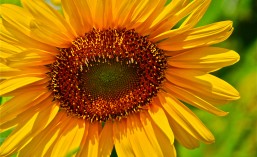Of all God’s gifts to the sighted man,
color is the holiest,
the most divine, the most solemn.
-John Ruskin

To the sighted man color is undeniably holy, but the sanctity of it goes deeper than the eye. Deep within the human soul I believe color is recognized as tidings from the Father of our world. There is also a holy melody meant for the ears. Pablo Picasso once asked, “Why do two colors, one put next to the other, sing?” He couldn’t explain it nor can I, but there are color combinations that compose the sweetest of tunes. Pink and blue is one of those duos, and together they sing a divine harmony reminiscent of sapphire skies filled with pink ribbons of light. And Richter, a soviet pianist, said, “Music is the poetry of the air,” and I couldn’t agree more because these colorful rhyming couplets fill the breath of my garden with prayer-like chants as well as with the holiness of their hues.
Let them praise the name of the Lord, for his name alone is exalted; his splendor is above the earth and the heavens. ~Psalm 148:13 ✝
**Photos taken by Natalie; collage by Natalie





